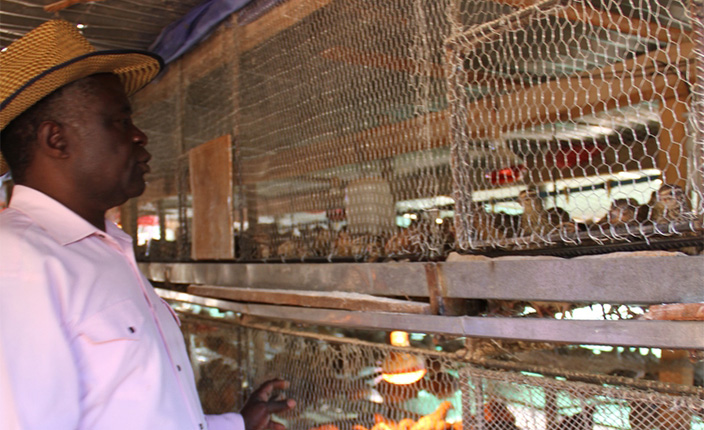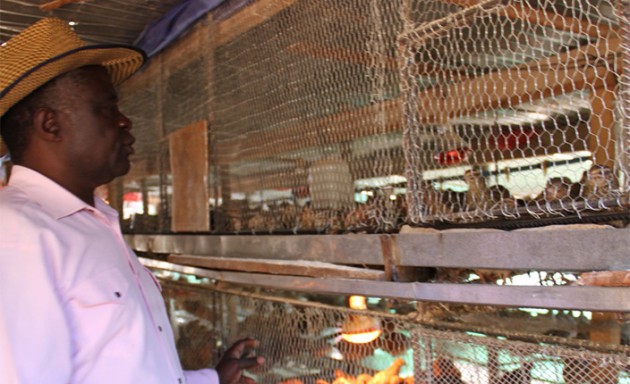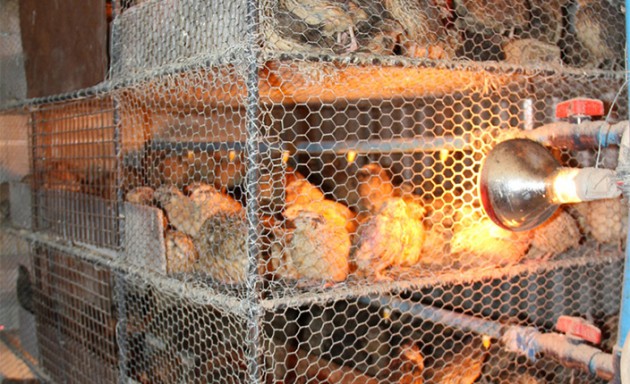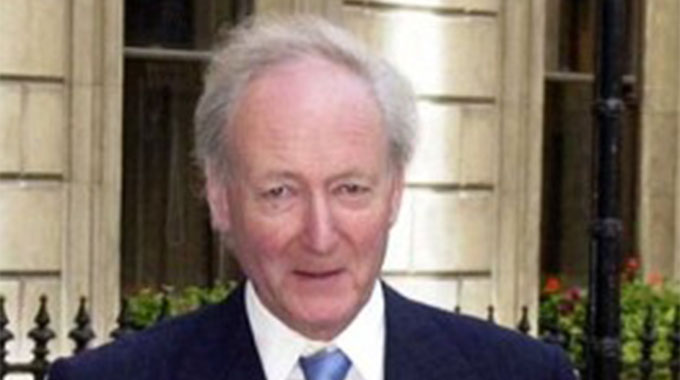Concession’s ‘Quail City’


Bishop Cyprian Mutsvene at the cages at his Quail City in Concession
Sydney Kawadza : Senior Features Writer
When the quail birds (zvihuta) craze hit Zimbabwe, it was associated with various myths. Some, of what the people said about the quails is unbelievable – wild claims about quail droppings curing cancer and quail tears being good for the heart and, to the extreme, claims about quail eggs reversing the effects of HIV and Aids.
Whatever the selling point, quails became the talk of town.
Quail anecdotes or “memes” took social media by a storm.
The debate on the healing virtues of quails even hit the corridors of power, going all the way to Cabinet and the House of Assembly.
However, in a corner of Zimbabwe was one farmer drawing the best out of quail farming.
In Concession, Mashonaland Central province, farmer Bishop Cyprian Mutsvene was building his stock.
Today, he has a 10 000-bird stock.
He has aptly named his plot the Quail City.
At Plot 1, Ramahori Farm, Bishop Mutsvene has, since September last year, grown to be arguably one of the largest quail breeders in Zimbabwe.
In a recent interview, he took time to dismiss the tales associated with the birds.
Dismissing the narratives associated with quail birds, especially the medicinal properties, Bishop Mutsvene urged people to be wary of the internet and social media.
“That is all speculation and misinformation. People are taking and relying on information from the social media but this have never been competently verified,” he said.
“I have also had access to the information from the same sources claiming that quails have medicinal values but I honestly value their nutritional values, for both the meat and eggs.”
Who can doubt Bishop Mutsvene?
The farmer started his venture in September last year with 100 chicks bought for $2 each.
In three months he had 1 000 quail birds.
It all started last year when his China-based son sent him an incubator for hatching roadrunner chicken eggs.
“It so happened that my son’s friend asked to borrow the incubator and started hatching quail birds in Harare,” he said.
“I later realised that he was doing good and he gave me about 100 quail chicks and I started the venture,” he said. “I have since lost count of the number of quail birds I have had as food but the birds in the cages can number from 9 800 to 10 000.”
There is a growing debate comparing the local quail in the wild to the domesticated birds.
Bishop Mutsvene, however, said breeding local quails was practically impossible.
“We might need to find a way to tame them but the fact is that the local quail birds are slow breeders laying two eggs per year and they are very elusive,” he said.
“It would be impossible to chase one and catch it alive while you go hunting for another till you have a cage full of the birds.”
Quail breeding was started in Japan and spread throughout southern Asia including China.

The quail birds at Plot 1, Ramahori Farm in Concession
“What we are breeding in Zimbabwe are called Japanese quails but now we have different varieties like the Italian, Japanese, Egyptian and the English white quails but originally they are from Japan,” he said.
Bishop Mutsvene acknowledged that Zimbabwe has been gripped with the quail breeding fever.
“Quail farming is becoming a very big industry and people enjoy it,” he said. “The quail birds are fast breeders and you find each quail, if you keep them properly, can lay from 280 to 300 eggs a year.”
A thousand egg-laying quails can give a farmer an average of 800 eggs per day.
“When you put the eggs into an incubator for 18 days, some can even hatch after 16 days so the project is fast and because they are fast at breeding you get a lot of quail birds within a short period,” he said.
At Bishop Mutsvene’s Quail City they hatch about a thousand quail birds a day.
“The quail birds are very fast breeders but the most important thing about them is that the meat and eggs are nutritious,” he said.
Bishop Mustvene was allocated the six-hectare plot in 2002.
“We were doing most of our farming from Harare, specialising mainly in soya beans, potatoes and maize.
“This year could be classified as a drought year but we have done quite well, harvesting at least 15 tonnes per hectare,” he said.
Bishop Mutsvene has hosted a number of field days on his plot including delegations visiting from outside Zimbabwe.
He believes quail breeding is a viable venture.
“Many Zimbabweans are very interested and many of them come to enquire and ask about quails. It is proving to be a very viable business venture,” he said.
In his quail bird manual produced at the Quail City, Bishop Mutsvene says much of the quail’s adult plumage is present at 10 weeks of age, but adult stature is not attained until 15 to 16 weeks of age.
“You can tell the sex of the birds by observing feather patterns and coloration at 12 weeks of age or by looking at the mandible (lower beak) slightly sooner.
“Mandibles of males become uniformly black by eight to 10 weeks old, while those of females are dull yellow or pale.”
On handling quail, Bishop Mutsvene’s manual notes that quails are subject to injury at any time during confinement.
“Injury causes loss of production, and non-salable birds, and often triggers cannibalism (among the birds).
“To minimise the risk of injury, provide transfer boxes that have padded ceilings and that are only six to eight inches deep.”
Bishop Mutsvene has also gone further in his quail farming venture and added a unit where he manufactures incubators.
“We started the venture when we turned an old fridge into an incubator and moved to proper manufacture of incubators for re-sale,” he said.
At the farm, there are incubators with a capacity for 40 000, 18 000 and others under construction.
The brooding house at the Quail City currently holds 3 000 birds.
On a good business day Bishop Mutsvene realises up to $200 from hatching eggs or selling the chicks to interested farmers.
Other people visit the Quail City for the delicacy that the bird has grown to be.
Feedback: [email protected]







Comments